京都で宿泊業に就いている私が、京都の魅力をお伝えします。
はじめに
私が働いている京都には、日本はもとより世界各国からお客様が来られます。
私はこれらのお客様に単なる宿泊だけにとどまらず、貴重な経験も提供できたらと考えていました。
私自身が京都をめぐって、リアルに感じたことをお届けしたい。
いずれはガイドをしたいと思っています。
まずは最初の第一歩として、このブログでお届けします。
記念すべき第一回目は、西芳寺、通称苔寺の訪問記です。
私と同じく京都愛にあふれる友人と訪れました。
事前予約
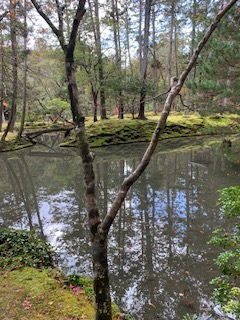
12月初旬に京都通の友人と一緒に西芳寺、通称苔寺を訪れました。
参拝には事前日までの前予約が必要です。
オンライン予約の料金は¥4,110です。
この参拝には写経体験と庭園拝観が含まれます。
この事前予約と¥4,110というお高めな料金により、参拝者数を制限して、庭園や周囲の環境を保全し、周辺の渋滞の緩和をされています。
目先の利益ではなく、寺院の景観の保全と本来の参拝の在り方に重きを置いておられています。
そのためオーバーツーリズムの京都にありながら、静けさを保っておられます。
参拝者は私語を慎むことも求められるので、これもこの静寂につながっています。
参拝
衆妙門と呼ばれる門のところに寺務員さんが何名かおられ、参拝者の対応をされていました。
参拝者の数に対して寺務員さんの数が多いと思いました。
これはしっかりと参拝者に対応したいというお考えからです。
とても丁寧に受付と説明をしてくださいました。
心が清々しくなる思いでした。
英語にも対応されていました。
世界中から参拝に訪れる方がいるから、この英語対応は必須なのだと思います。
宿泊業では当たり前のことですが、寺社仏閣でもそうなっているのだとわかりました。
時代のニーズに対応されていると思いました。
衆妙門をくぐるとこの世とは思えぬ景色と静寂が広がっていました。
どこを切り取っても絵になるような景色で、自然な光景ながらも、しっかりと手入れと管理されていることがわかりました。
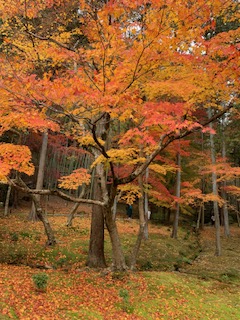
この美しい景色を見て、私は自分の家を思い浮かべました。
忙しさにかまけて、書類が台所のカウンターに置きっぱなしになっていたり、いつか使うだろうと放置しているものがたくさんありました。
自分の家もきちんと整えようと決意しました。
写経
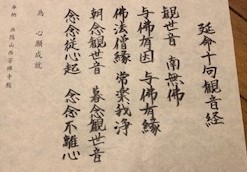
まずは写経体験です。
延命十句観音経という四十九文字のお経を書きます。
下字が書かれており、それを写します。
量が多くなく、とてもやりやすかったです。
初心者や外国人にとっては、とても良い内容だと思います。
また座敷だけでなくテーブル席もあり、足が不自由な方や外国人にも対応されていました。
字がきれいかどうかにかかわらず、一文字一文字に神仏が宿っているということで、心を込めて書くことが大切だということです。
日常のあわただしさから離れて、目の前の経文に集中する体験ができました。
15分くらいで写経を終えました。
庭園
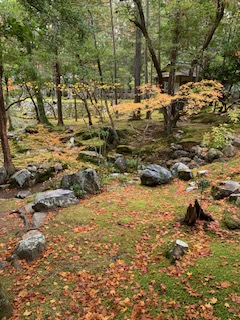
写経を終えて庭園を拝観しました。
地面は長い年月をかけて苔が生えそろい、その緑の濃淡が素晴らしい景色を作り出していました。
12月上旬には、苔の上に紅葉した楓の葉が落ちています。
無造作に落ちている楓の葉がまるで仕組まれたかのように緑とオレンジや赤のすばらしい共演を織りなしています。
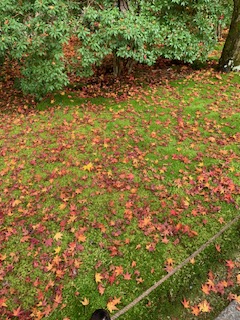
さざんかも華麗なピンクの花を咲かせて彩りを添えています。
順路は一通で、黄金池という池を半時計周りに行く順になっています。
その道沿いには3つの茶室があります。
一つの庭園の中でも場所により景色が違い、見どころがたくさんあります。
今回は紅葉の時期ですが、春夏秋冬と梅雨の五季あると言われ、それぞれに違う風景を見せてくれます。
次は新緑の時期に来たいと思いました。
庭園では、皆静かに写真を撮ったり、苔をに見入ったり、椅子に座り景色を堪能したりしていました。
外国人も穏やかな表情をして庭を眺めていました。
みながそれぞれ庭を楽しんでいました。
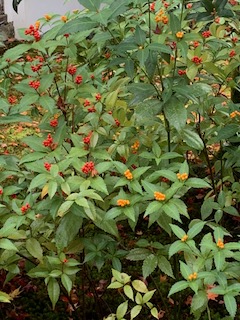
知らない植物がたくさんあり、私はスマホを使ってその写真から植物の名前を検索しました。
これがセンリョウと言うんだなどと、勉強になりました。
上記の写真です。
赤や黄色の実をつけてとても可愛い植物です。
写経を含めて1時間半ほどで参拝を終えました。
12時半には門が閉まるそうです。
本当に参拝者の数を制限されているのだなと思いました。
宿泊業への応用
私は普段、宿泊業に携わっていますが、今回の参拝がとても自分の仕事の参考になりました。
- 一人一人の参拝者への丁寧な対応
- 目先の利益でなく、本来あるべき姿を守っている
- 時代への対応
- 素晴らしい庭の維持・管理
私は自分の仕事にもこれらを徹底させようと思いました。
素晴らしい宿泊体験を提供したい。
そのためには一人一人のお客様を大切にして、施設のメンテナンスを徹底する。
時代のニーズをくみ取る、しかし目先の利益は追及しない。
こうすることを続けていけば、あとから結果はついてくると思います。
帰りの楽しみ
帰りには近くのお蕎麦屋さんで名物のとろろそばを食べました。
冷えた手にお蕎麦の器が暖かく、お出汁が体にしみて本当に美味しかったです。
そこの女主人がとても素敵な人でした。
お客様とのコミュニケーションを大切にされている。
とても暖かいおもてなしを受けました。
私もこんな風になりたいと思いました。
最後に
今回の体験は、忙しい日々の中にゆっくりと過ごすこと、目の前のことに集中すること、日常の中の素晴らしさに目を向けたり、一つ一つのことを丁寧に対応したりすることの大切さを私に教えてくれました。
お客様に京都案内をしたいと思い西芳寺を訪ねましたが、結果それだけでなく自分の仕事に対するモチベーションも上がりました。
これからもこのような体験をもっとして行き、モチベーションを上げながら、自分が感動した体験を共有していきたいと思いました。
こちらもご覧ください。
外国人におすすめのお店を伝える方法&Googleマップでスマートに案内!
建仁寺の訪問記:Visit to Kenninji Temple
観光地って英語でなんて言うの?:観光地、旅館、新幹線etcまで旅行に関する英語表現
【体験談】15年間専業主婦だった私が39歳で正社員に!49歳で転職!
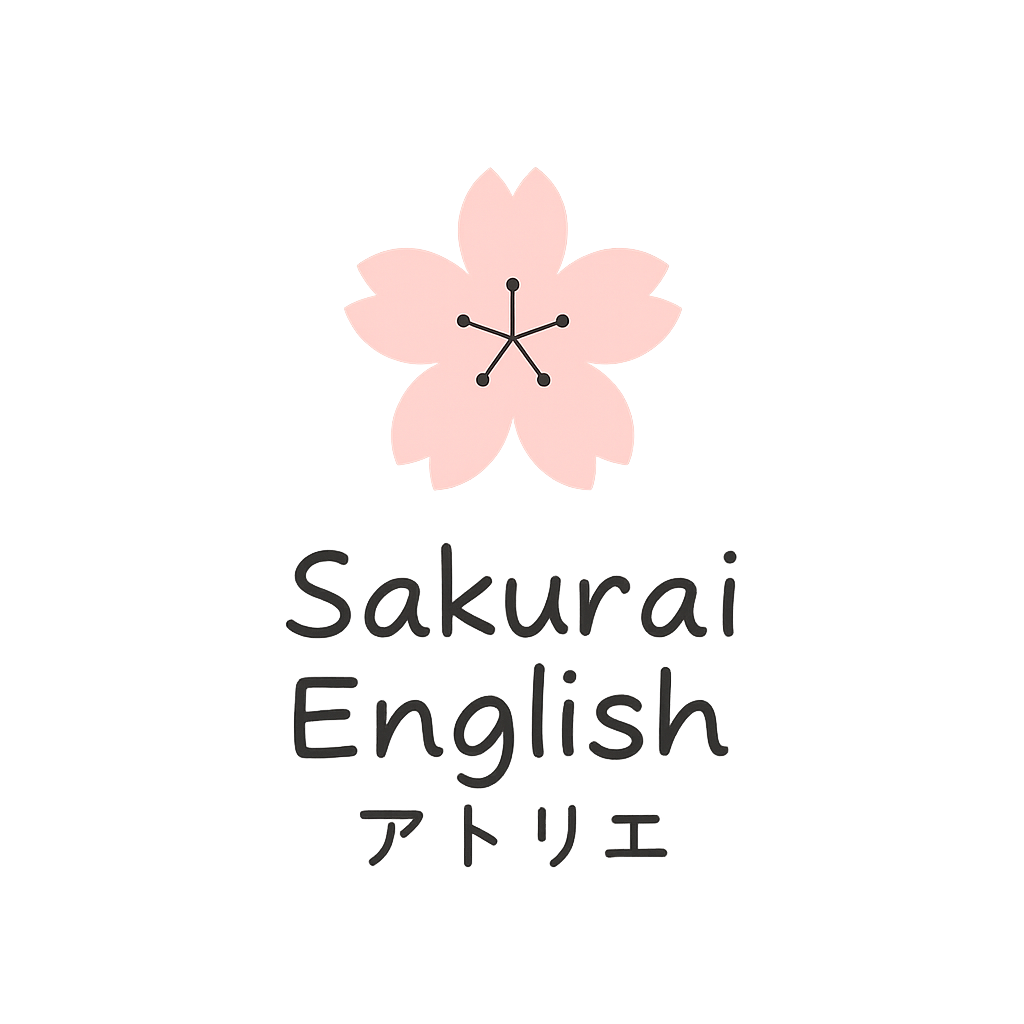
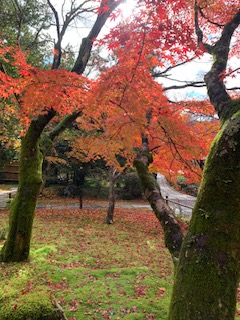


コメント